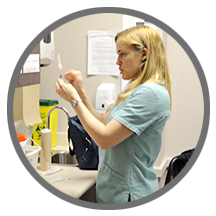Why We Collaborate
Why bother collaborating?
The following are some thoughts about collaboration from various health care professionals in primary care and public health.
 “When you have what appears to be an intractable problem, it can be overcome by a collective. Collaboration can bring together the clinical, the social, and the preventive. It’s about building synergies.”
“When you have what appears to be an intractable problem, it can be overcome by a collective. Collaboration can bring together the clinical, the social, and the preventive. It’s about building synergies.”
“We were looking for help and they were looking for help. I think that’s why the collaboration happened. We saw solutions that were possible by working together. It’s about using limited resources in creative ways to solve problems.”
“Smoking rates in our community are higher than in other communities in our province. It’s about meeting the needs of our communities.”
Watch this social worker discuss his perspective on primary care and public health collaboration.
Where does collaboration make the most sense?
Collaborations are strong where there are synergies between primary care and public health activities. This is where some of the strongest collaborations can occur.
 Collaboration has been shown to work well to address a number of foci. Collaborations can enhance surveillance activities, such as the management and tracking of infectious diseases.
Collaboration has been shown to work well to address a number of foci. Collaborations can enhance surveillance activities, such as the management and tracking of infectious diseases.
It can be helpful in improving maternal-child programs and services, chronic disease prevention and management, as well as health promotion related to lifestyles. See link >>
Successful Canadian cases of primary care and public health collaboration have been identified that fit under four main aims of the collaboration: See link >>
 These include:
These include:
- Community-based health promotion programming,
- Healthcare provider capacity building,
- Regional vaccine and immunization management and surveillance,
- Drug addiction,
- Complex issues,
- Increasing access to care through outreach and care to vulnerable or marginalized populations.
